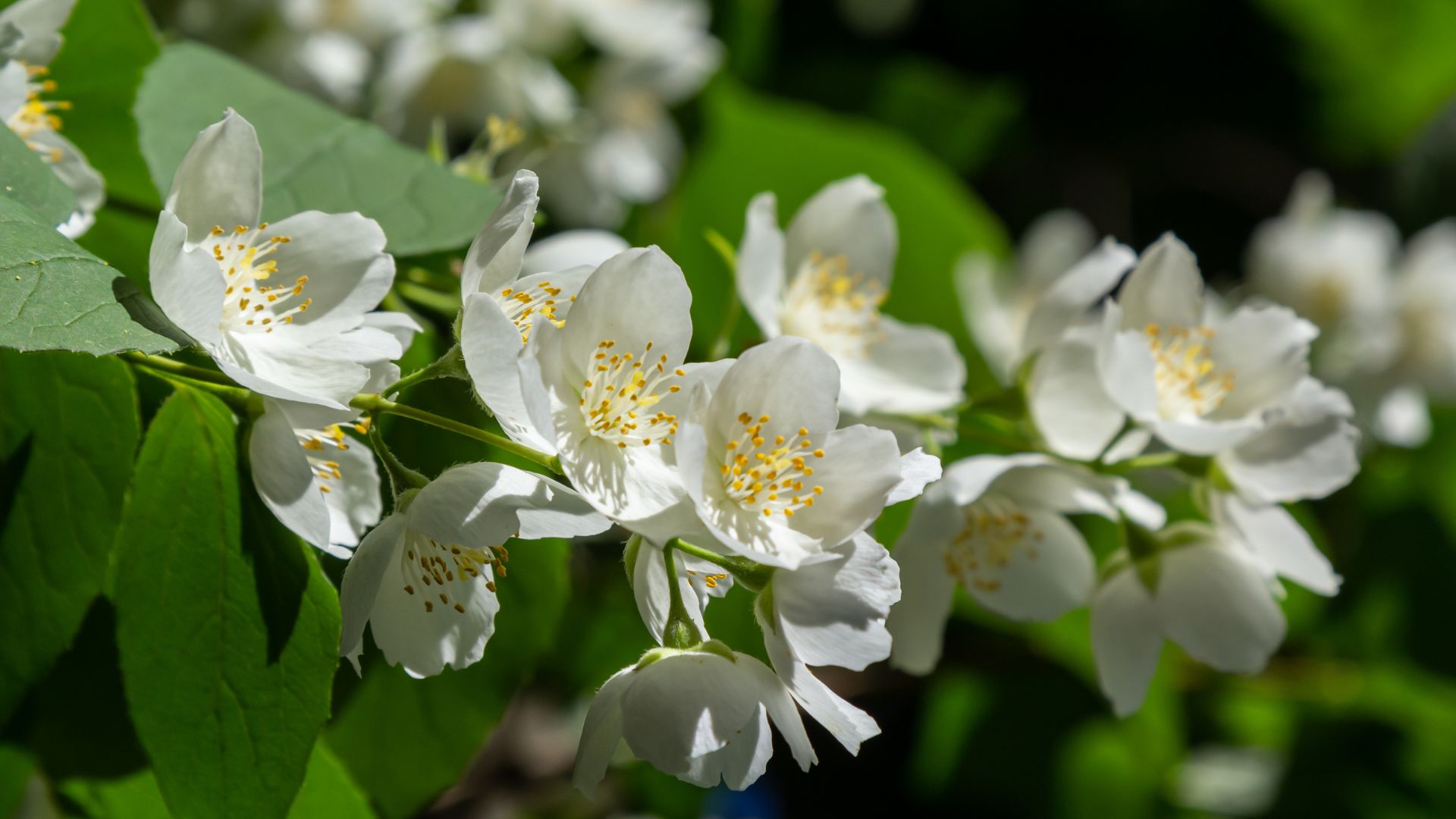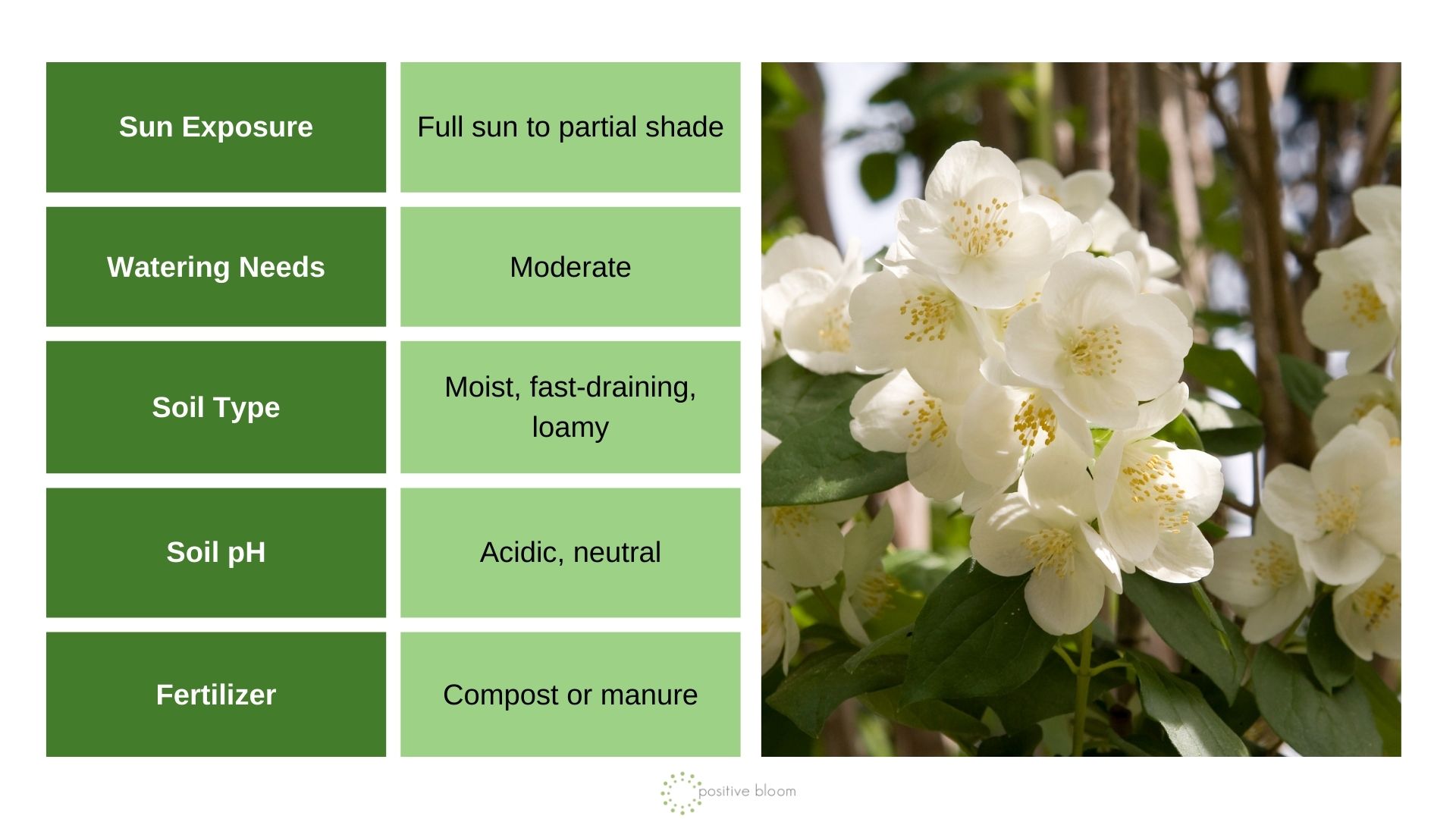If you haven’t heard of the mock orange plant, the first thing you should know is that it isn’t an orange nor is it related to this tree.
This is actually a deciduous shrub and it got its nickname because the fragrance of the blossoms reminds of oranges. You won’t get any fruits to harvest but you’ll have the most spectacular garden display you could ever imagine.
In this article, I’ll show you how to grow and care for a mock orange. You’ll also see the best varieties to select and how to get more of these beautiful plants for free.
Here is some basic info.
Let’s get started!
What Is A Mock Orange?
As mentioned, this plant is classified as a deciduous shrub and is mainly grown for its magnificent white blossoms. They have a citrusy scent and pair perfectly with evergreen foliage. If you want to create a scented garden, you should include mock oranges.
Cup-shaped blossoms develop into clusters, appear in late spring, and last through early summer.
This plant species has been cultivated since the 1600s and has different usages. For instance, Native Americans used it for shaping tools and weapons.
It can be found in various cleaning products and, of course, in flower arrangements. This shrub is native to Europe but its beauty and scent made it popular all around the world.
Remember that mock orange isn’t a single variety but rather a common name for 50-65 known species.
This means you have many options to choose from, but here are my favorites.
Varieties To Select
• Miniature Snowflake: If you have a smaller garden, this mock orange is perfect for you. It won’t exceed 3 feet and generates lovely scented double white blossoms.
• Aurea: This is one of the most popular mock orange varieties and is renowned for its compact growth habit and golden foliage that appears in spring.
• Belle Etoile: The name says it all; in French, belle etoile means beautiful star and this mock orange becomes the star of every garden when in bloom. It features large scented blossoms adorned with purple centers.
• Blizzard: This is another variety with a name that reveals a lot. Blizzard is one of the most cold-tolerant mock oranges and can reach up to 5 feet in optimal conditions.
Have you selected a mock orange variety for your garden? Let’s see how to grow these amazing plants!
Ideal Growing Conditions
If you’re a beginner grower, you’ll be happy to hear that this is a low-maintenance shrub that doesn’t need any special conditions to thrive.
Here’s an overview of mock orange care requirements.
Light
Mock orange plants can grow in both full sun and partial shade. However, the more sun the plant gets, the more blossoms it will produce.
If you live in warmer climates, ensure some partial shade for your mock oranges on hot afternoons, especially if you grow them in containers.
Watering Schedule
The watering needs of mock oranges differ depending on the growth stage. For instance, juvenile plants need a lot of water until fully established, and then you can cut back on watering.
Even though mock oranges can tolerate some drought when mature, it’s better to keep the soil consistently moist.
Pay close attention not to overwater these shrubs because diseases such as root rot can settle in.
Best Soil Type
As mentioned, mock oranges are sensitive to overwatering and one of the best ways to prevent this is to grow them in a free-draining soil type.
For best results, ensure an organically-rich growing medium with acidic to neutral pH.
Temperature And Humidity
Mock oranges are hardy in USDA zones 4 through 9 so there’s typically no need to protect them from low temperatures.
A layer of mulch before winter will ensure healthy development during the colder months. Humidity isn’t problematic in most cases but it’s better to inspect for diseases in high humidity.
Fertilizing Schedule
Mock oranges aren’t heavy feeders and there’s really no need to use chemical fertilizers.
Add some compost or manure when planting your mock oranges and repeat every spring.
Remember that nitrogen-rich fertilizers encourage leaf growth, which can significantly inhibit bloom production in your mock oranges.
Pruning Mock Oranges
Your mock oranges will benefit from yearly pruning. These plants generate new blossoms on the prior year’s growth, so it’s better to start trimming immediately after the blooming season.
You need to remove the growth above buds on the stems that have completed flowering. It’s always recommended to cut off any damaged, diseased, or poorly shaped branches.
If you have a mature mock orange, you can cut the oldest stems down to the ground.
Never cut back these plants in the fall because it can affect the production of blossoms the next season.
Here’s a video on how to prune mock oranges:
How To Propagate Mock Oranges
Everyone likes free plants and one of the best things about mock oranges is that there are many ways to propagate them.
Let’s see!
From Cuttings
The first and most popular propagation method for mock oranges is from cuttings. You can take softwood cuttings in the summer or wait until fall to take hardwood cuttings.
If you decide on softwood cuttings, make sure the plant has finished blooming before taking the cuttings.
Here are the steps to propagate from both types of cuttings.
1. Select a healthy stem on your mock orange that has a few leaves on the tip.
2. Scrape off some bark from your cutting and put it in a jar filled with fresh and clean water.
3. Fill a container with suitable soil for mock oranges, and put the cutting in the center.
4. Lightly water the cuttings and put them where they’ll be exposed to bright indirect light.
From Seeds
It’s possible to propagate mock oranges from seeds but this isn’t a common method. Beginners rarely use it and the main reason is that the seeds must go through a cold stratification process. (1)
Here’s how to do it.
1. Put your mock orange seeds on a lightly moist paper towel and place them in a refrigerator.
2. After a few weeks, fill a container with soil and compost and sow the seeds at a depth of half an inch.
3. Keep the mock orange seeds warm and mist them from time to time.
4. The seeds typically take 2 weeks to germinate but the seedlings can be planted in the ground in about 2 months.
By Division
You can take your mock orange out of the ground and divide the root ball into a few sections.
Pay attention not to damage any roots during division. Replant the sections in a desired spot and give them more attention until they’re fully established.
Planting Mock Oranges
If you bought mock orange plants from the nursery center and they’re ready for transplantation, first select a spot. Make sure it receives enough sun and the soil is quick-draining.
Then dig a hole that’s about twice the size of a mock orange root ball. If you’re planting more mock oranges, make sure to leave 6-7 feet between each plant.
Those who decide on spring planting should mix some compost or manure into the soil. Keep the soil consistently moist until your mock oranges are fully established.
You can plant them in various locations in your garden. Make it a part of your moonlight garden, plant it near the patio for fragrance, or plant it on a slope to prevent soil erosion.
Common Issues
Aphids, spider mites, and black scale are the most common pests that can attack your precious mock orange. Regular inspection and early treatment with insecticidal soap will prevent significant damage.
Mock oranges aren’t prone to diseases but powdery mildew and bacterial spot can occur after heavy rains. The easiest way to avoid these diseases is to ensure enough space between each plant and annual pruning to prevent overcrowding.
That’s it! Now that you know everything about mock oranges, add them to your garden and enjoy their captivating beauty and enchanting scent!
References
1. Seed stratification: What seeds require cold treatment. (2022, January 27). Illinois Extension.



